PHOTOGRAPHY
A mouse intestine, neurons in a rat brain and water fleas all scooped top places in Nikon’s 50th annual Small World Photomicrography Competition.
Nikon Instruments Inc. announced the winners of the competition, which is celebrating five decades of excellence in microscopy and digital imaging.
This year’s first place prize was awarded to Dr. Bruno Cisterna, with assistance from Dr. Eric Vitriol of Augusta University, for his groundbreaking image of differentiated mouse brain tumor cells, highlighting the actin cytoskeleton, microtubules, and nuclei.
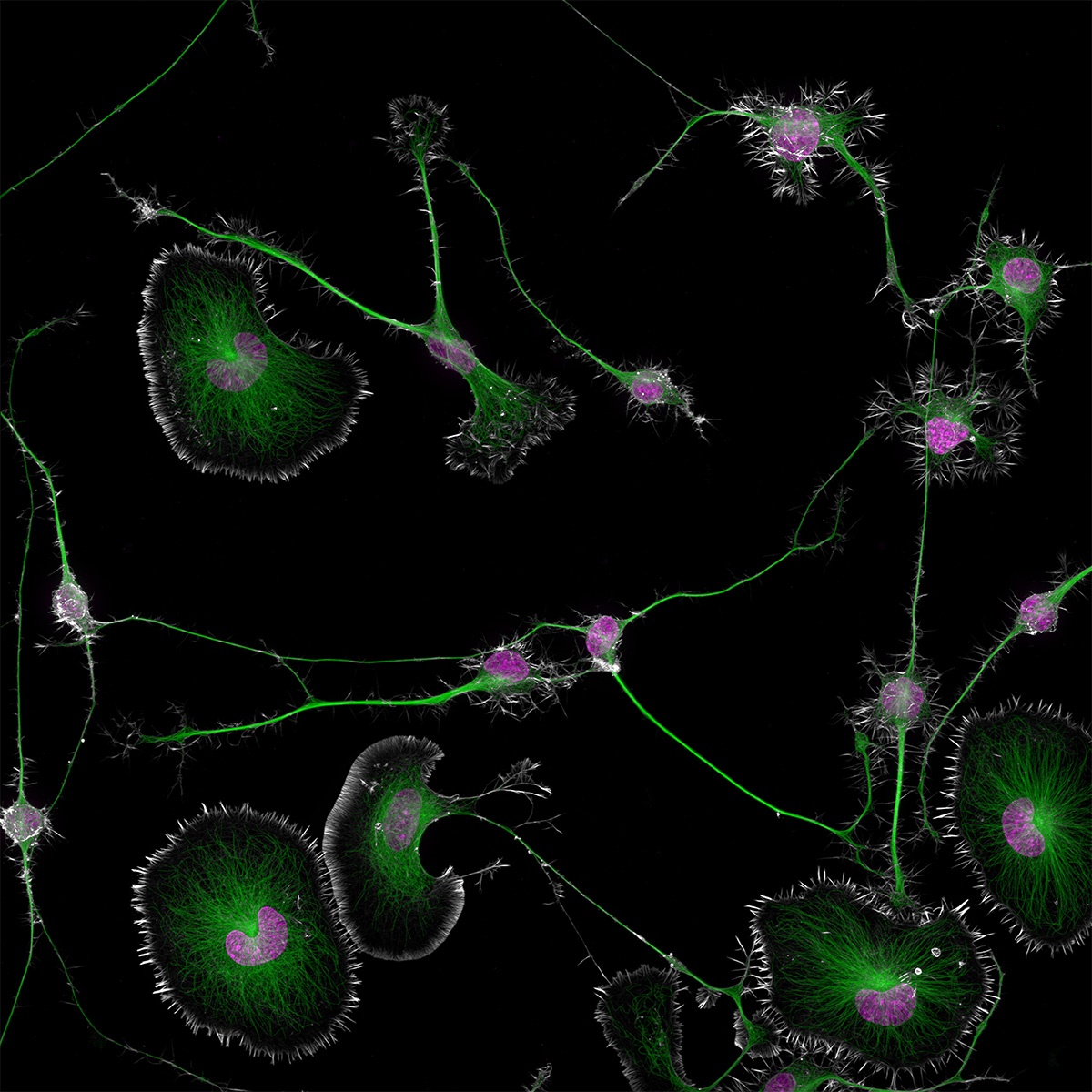
1st Place: Dr. Bruno Cisterna & Dr. Eric Vitriol, Medical College of Georgia at Augusta University, Department of Neuroscience & Regenerative Medicine, Augusta, Georgia, USA. Differentiated mouse brain tumor cells (actin, microtubules, and nuclei).
This image reveals how disruptions in the cell's cytoskeleton – the structural framework and “highways” known as microtubules – can lead to
diseases like Alzheimer's and ALS.
Dr. Cisterna’s research revealed that profilin 1 (PFN1), a protein crucial for building the cell's structure, plays a key role in maintaining the microtubule highways essential for cellular transport. When PFN1 or related processes are disrupted, these highways can malfunction,
leading to cellular damage similar to what is observed in neurodegenerative diseases.
"One of the main problems with neurodegenerative diseases is that we don't fully understand what causes them ,” said Dr. Cisterna. “To develop effective treatments, we need to figure out the basics first. Our research is crucial for uncovering this knowledge and ultimately finding a cure.
"Differentiated cells could be used to study how mutations or toxic proteins that cause Alzheimer's or ALS alter neuronal morphology, as well as to screen potential drugs or gene therapies aimed at protecting neurons or restoring their function.”
His patience and determination were crucial in capturing his image. "I spent about three months perfecting the staining process to ensure clear visibility of the cells. After allowing five days for the cells to differentiate, I had to find the right field of view where the differentiated and non-differentiated cells interacted.
"This took about three hours of precise observationunder the microscope to capture the right moment, involving many attempts and countless
hours of work to get it just right.”
The hard work behind this discovery underscores its significance, bringing researchers closer to answers that could potentially transform millions of lives.
“After three years of research, we finally published our findings four months ago in the Journal of Cell Biology, and there's still more work to be done,” said Dr. Cisterna. “I’m deeply passionate about scientific imaging; I’ve been following the Nikon Small World contest for about 15 years.
"It's an incredible contest that highlights the beauty of photomicrography but also inspires continued exploration and innovation in the field."
See all the winning entries on the Nikon Photomicrography competition website.
Other entries
4th place: Section of a small intestine of a mouse
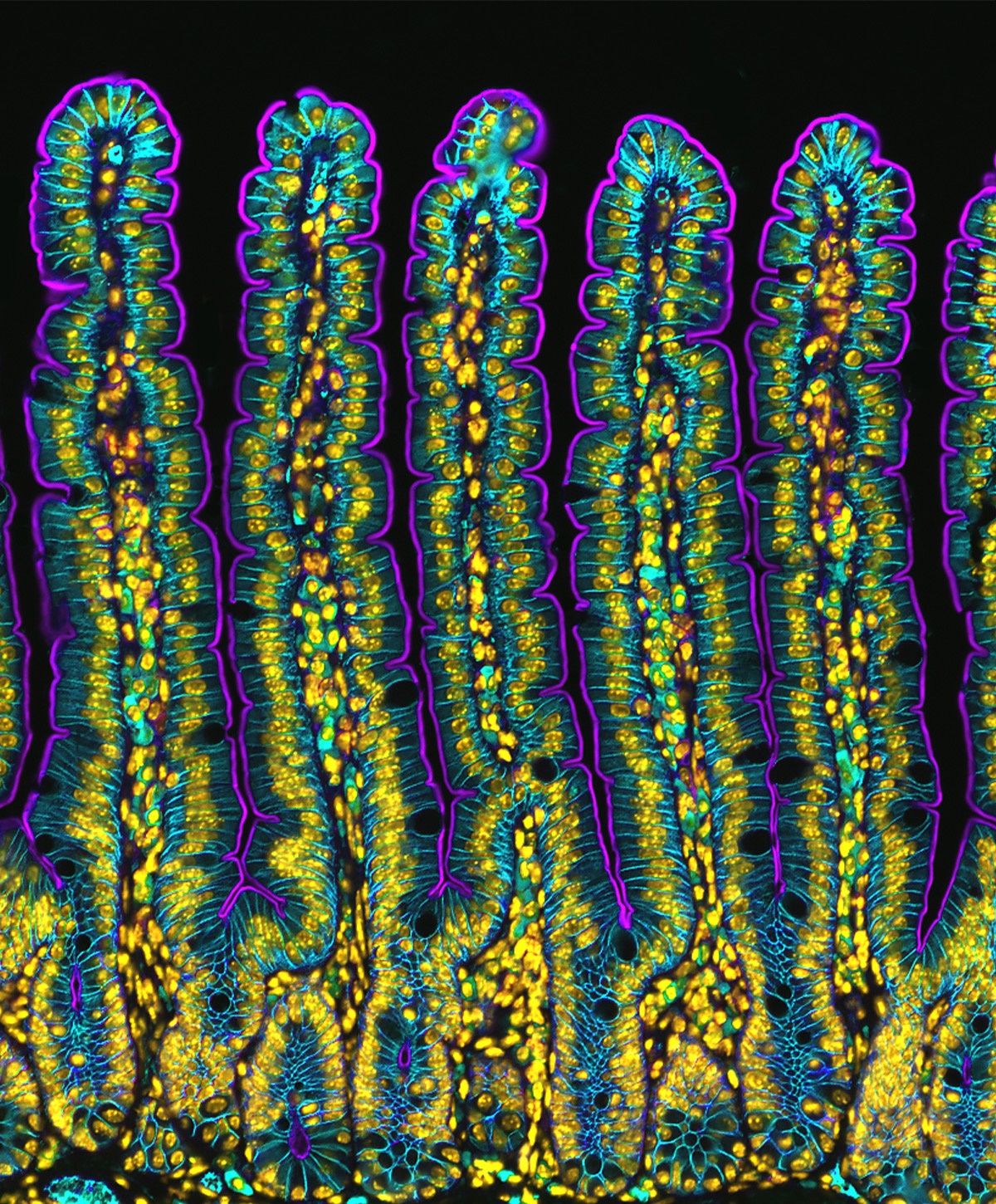
Dr. Amy Engevik, Medical University of South Carolina, Department of Regenerative Medicine & Cell Biology, Charleston, South Carolina, USA. Section of a small intestine of a mouse.
8th place: Adult rat brain
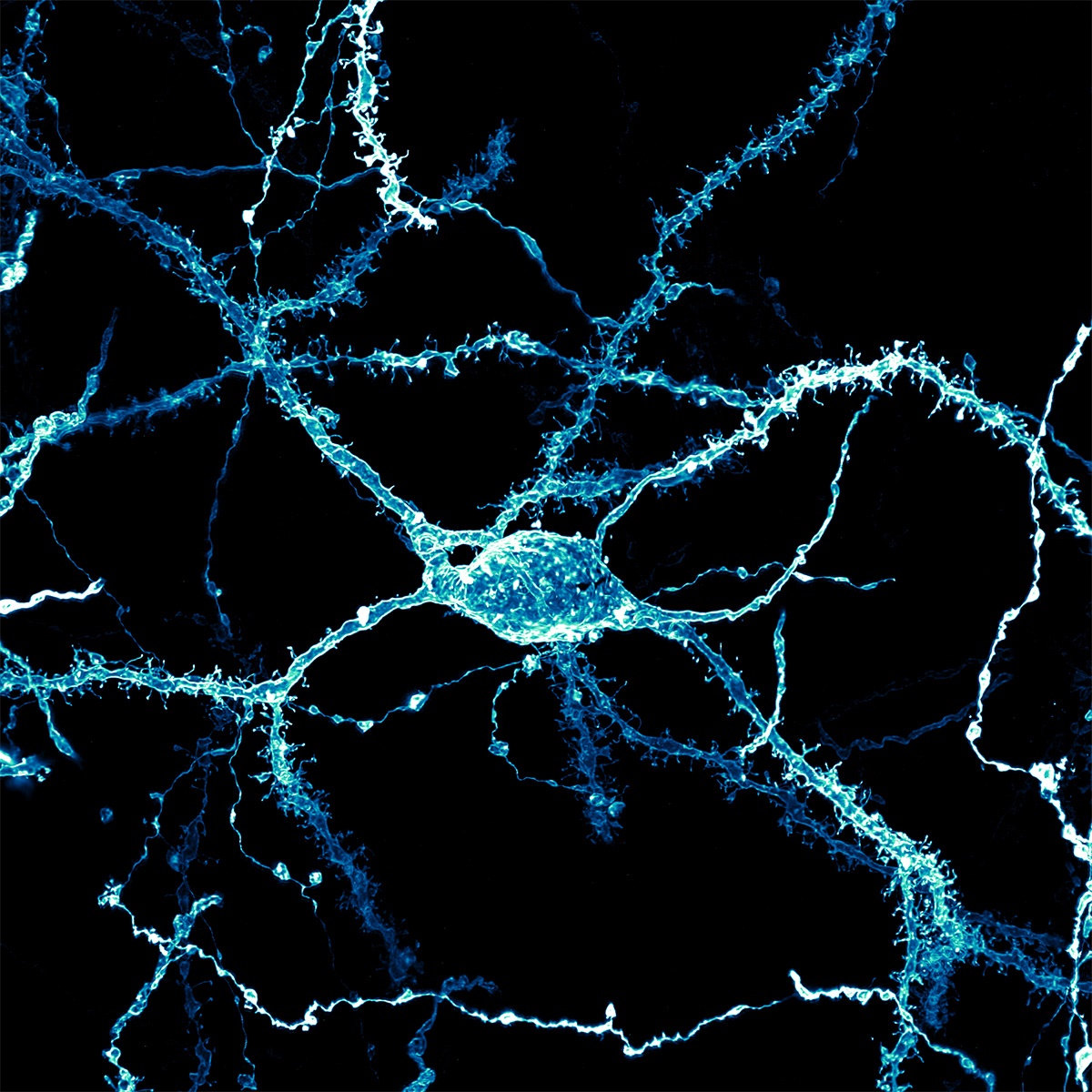
Stephanie Huang, Victoria University of Wellington, School of Biological Sciences; School of PsychologyWellington, New Zealand. A neuron densely covered in dendritic spines from the striatum of anadult rat brain.
9th place: Pollen in a garden spider web
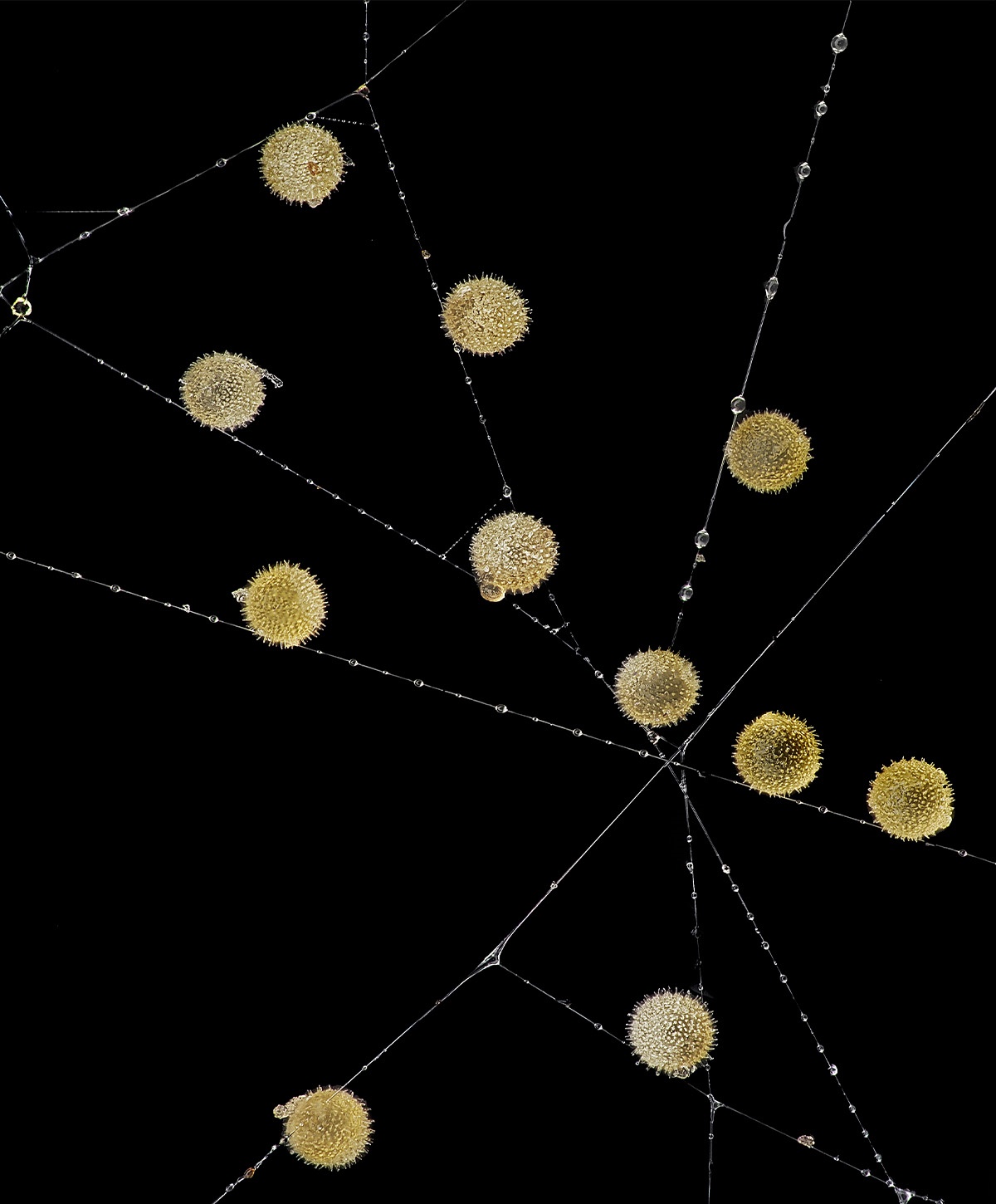
John-Oliver Dum, Medienbunker Produktion, Bendorf, Rheinland Pfalz, Germany. Pollen in a garden spider (Araneus) web.
13th place: Eyes of a green crab spider
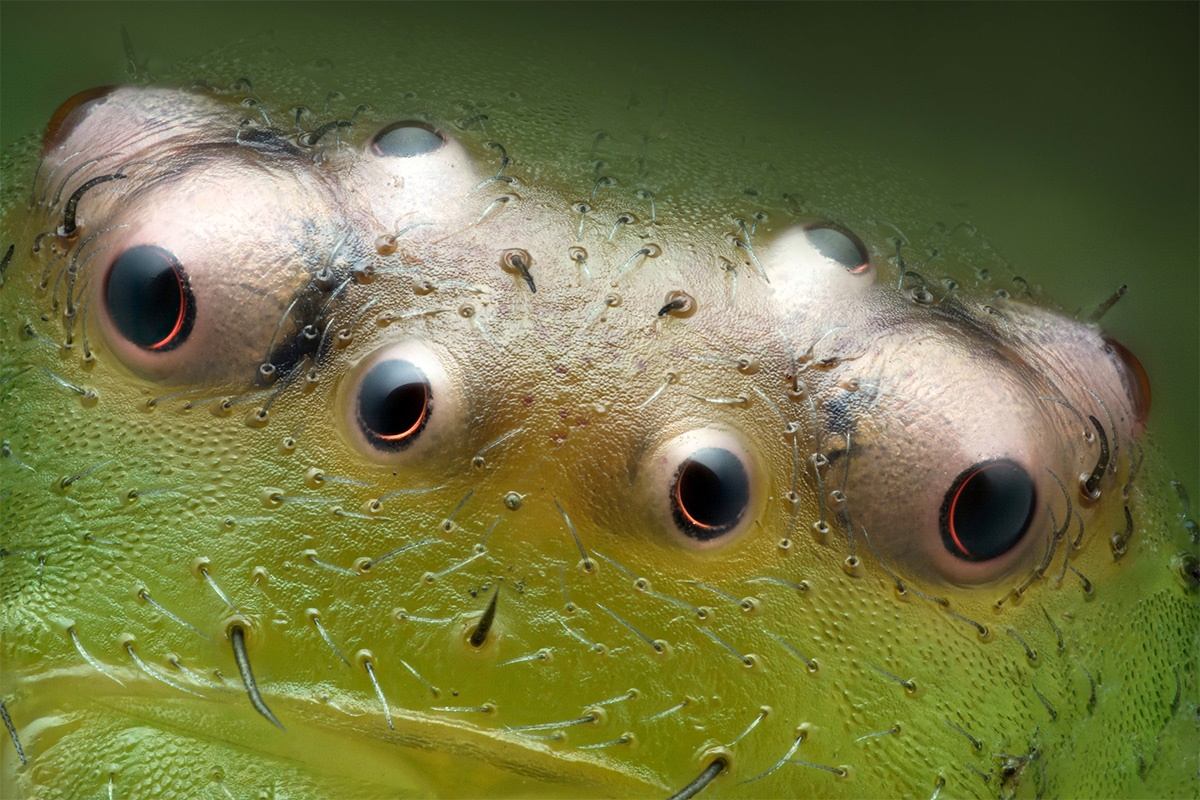
Paweł Błachowicz, Bedlno, Świętokrzyskie, Poland. Eyes of green crab spider (Diaea dorsata).
16th place: water fleas
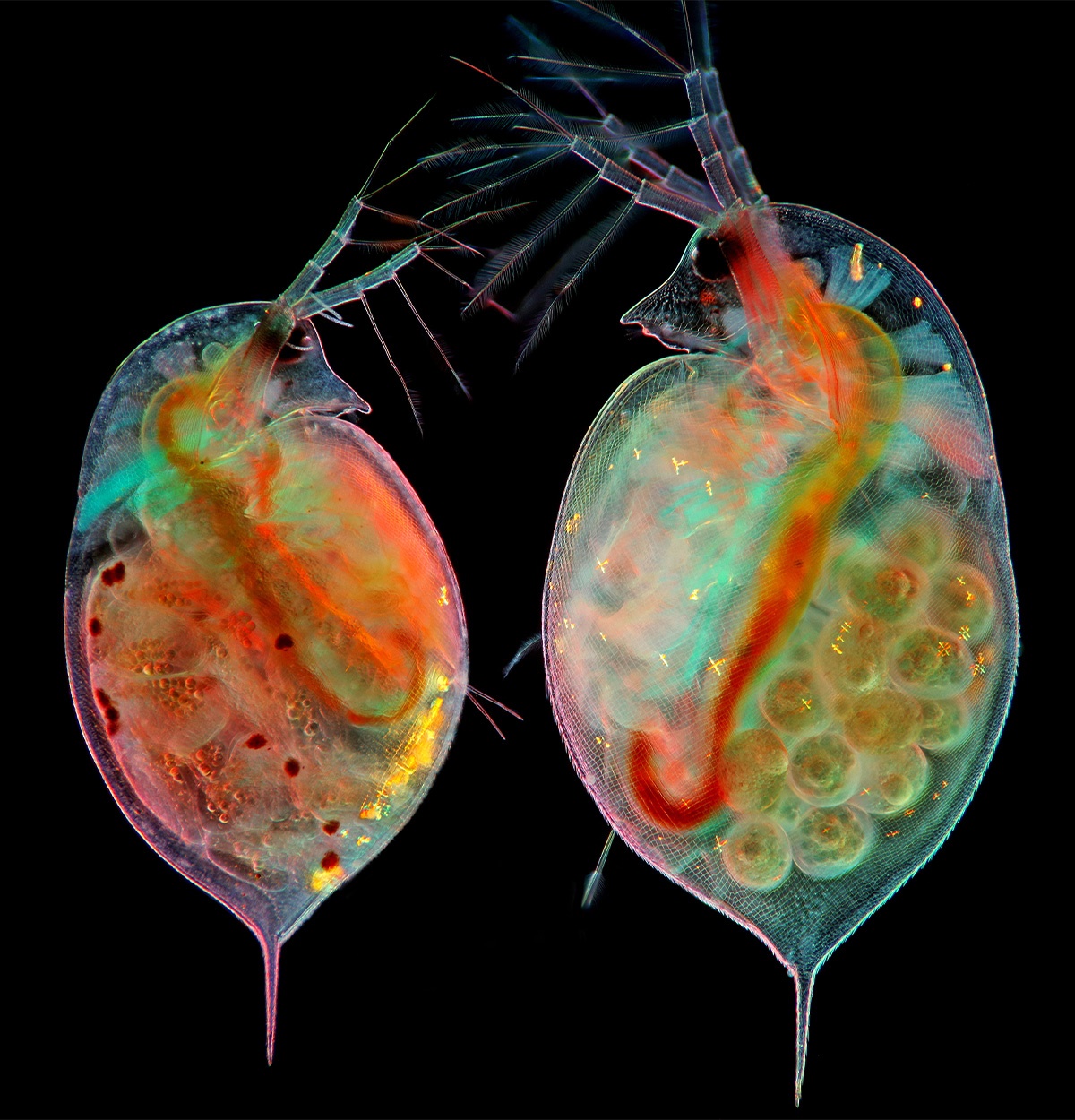
Marek Miś, Marek Miś Photography, Suwalki, Podlaskie, Poland. Two water fleas (Daphnia sp.) with embryos (left) and eggs (right).
18th place: insect egg parasitised by a wasp
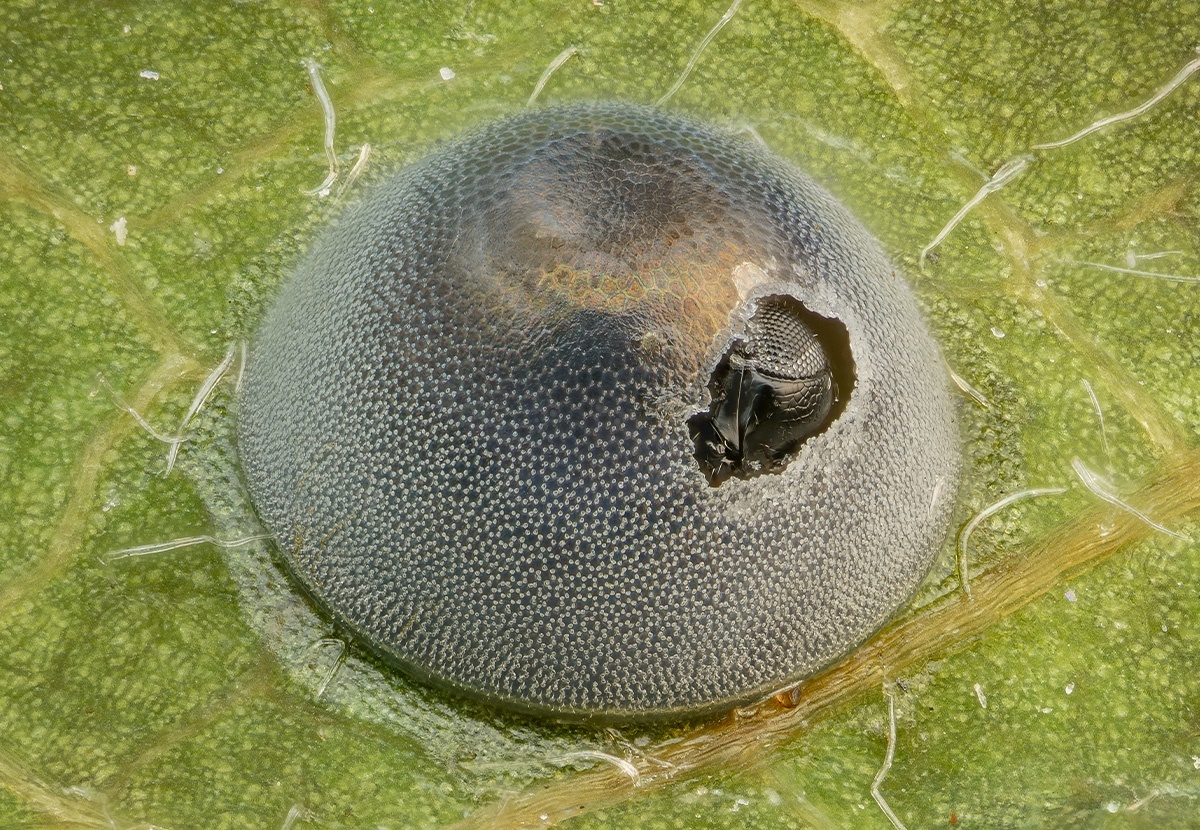
Alison Pollack, San Anselmo, California, USA. An insect egg parasitized by a wasp.
20th place: mouse neuroblastoma cell differentiation
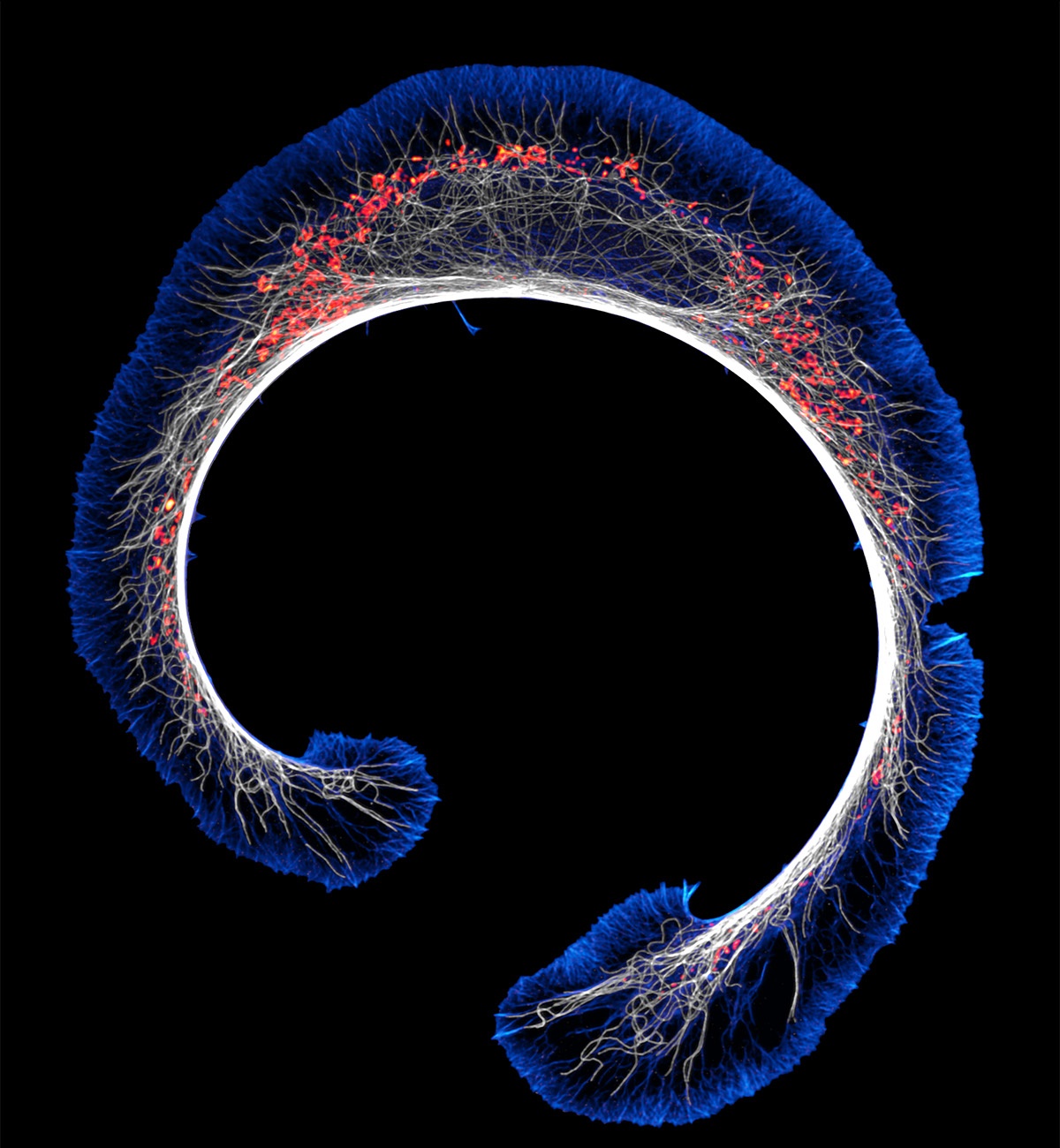
Dr. Bruno Cisterna & Dr. Eric Vitriol, Medical College of Georgia at Augusta University, Department of Neuroscience & Regenerative Medicine, Augusta, Georgia, USA. Early stage of mouse neuroblastoma cell differentiation (actin, microtubules, and mitochondria).
Source: Online